A motor is a kind of machine that converts electric energy into mechanical energy. The working principle of most motors is the interaction between current and magnetic field inside windings, which will generate force in the form of shaft rotation.
These motors can be powered by DC or AC power supply. The DC power supply is a battery, while the AC power supply is an inverter, power grid, and generator. The generator is mechanically similar to the motor but works in the opposite direction by converting mechanical energy into electrical energy. The motor can be composed of rotor, stator, air gap, winding, bearing, and commutator. The definition of motor winding is that the winding in the motor is the conductor placed in the coil, which is usually wrapped around a coated flexible ferromagnetic core to form the magnetic pole and is strengthened with the current.
Generally speaking, after winding the coil, the motor shall undergo at least two tests, namely, voltage withstands test and interlayer test, and then be assembled into a complete motor. Even, some manufacturers will conduct another test after the overall assembly of the motor, so that one more test is safer, which is a good idea; However, it should be noted that after the overall assembly of the motor, whether there are electronic components inside, the detection specification should be changed to the detection conditions of electronic components instead of the motor detection specification, which will directly impact and damage the electronic components and also cause motor damage.
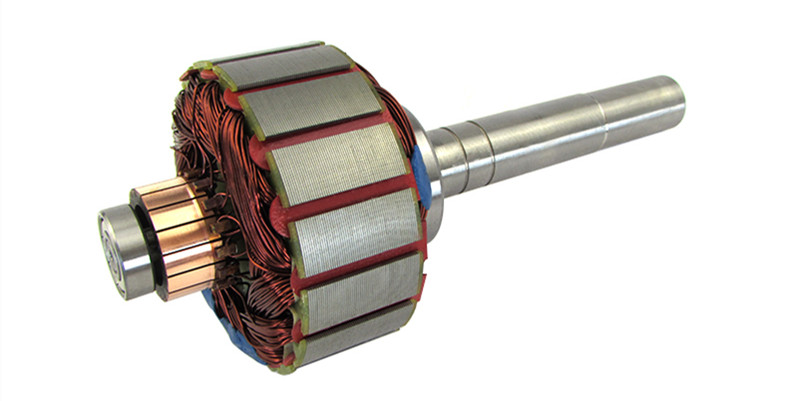
Withstand voltage test
The goal is whether the coil has leakage to other parts of the motor. The motor coil is wound on the silicon steel sheet, so a layer of insulating material will be placed on the surface of the silicon steel sheet during production to prevent electricity from being transmitted from the enameled coil to the motor. In real production, there are actually two layers of protection. In addition to the insulating layer on the silicon steel sheet, the surface of the enamelled wire rod is also covered with a layer of insulating paint.

Therefore, when testing, one end of the test instrument is often connected to the coil, and the other end is in contact with the silicon steel sheet. A voltage value is input to measure the leakage current between the enameled coil and the silicon steel sheet. As for the voltage value to be input during detection, the length of detection time and the allowable leakage current will vary with the application of the motor. The voltage, time and leakage current of these three measurement parameters are specified by the corresponding CCC. 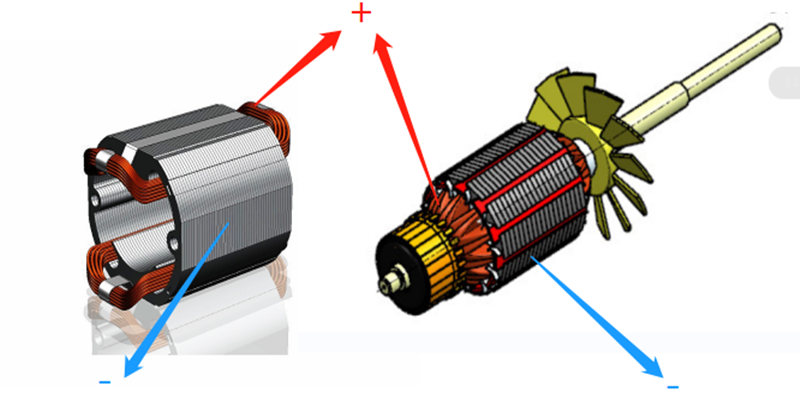
In the withstand voltage test instrument, in addition to the detection expression of leakage current, it can also be defined by insulation resistance. The conversion between it and leakage current value is the basic electrical formula:
If the detection specification is input 1500V, time 1 minute, and leakage current 0.5mA, the converted insulation impedance is 30m Ω. Therefore, the measurement conditions of insulation impedance are the same as input voltage 1500V, time 1 minute and the lower limit of insulation impedance is 30m Ω. Of course, in most cases, two simultaneous tests will be set, that is, the same detection instrument will first detect whether the leakage current is lower than 0.5mA and whether the insulation impedance is higher than 30m Ω. Of course, if there is a functional test instrument, as long as the conversion is correct, the test action can also be carried out.
Interlayer test
Motor coils are stacked and wound layer by layer, ranging from a few turns to thousands of turns. The number of turns is directly related to the motor output torque. It is known that there is an insulating layer on the enamelled coil, so the current will flow through the motor coil one by one. However, if there is a broken skin on the coil, there is a shorter path for the current. When it is feasible, there will be short-circuit tripping. If there is 100 turns, it will be reduced to 50 turns, and the electrical resistance will be reduced, resulting in greater current entry, which will increase the conduction copper loss, Make the coil heat or even burn.
It can be seen from the above formula that the conduction copper loss is square with the current. Therefore, when the current increases, the loss PC will increase greatly and generate heat energy. The interlayer tester is an instrument used to check whether there is leakage on the coil. In fact, it is to inject a pulse voltage, measure the current oscillation on the coil, and judge whether the coil is normal and stable by comparison. In fact, it is very similar to measuring the inductance value of the coil. According to the basic electricity, there will be an inductance value on the coil. For different coil numbers and wire diameters, the inductance value induced above will be different. Then we can use the comparison of this inductance value to judge whether the coil characteristics are consistent. Of course, the function and power of the interlayer tester are more powerful, and there are many ways of comparison inspection, but the basic meaning is to check the inductance on the coil.
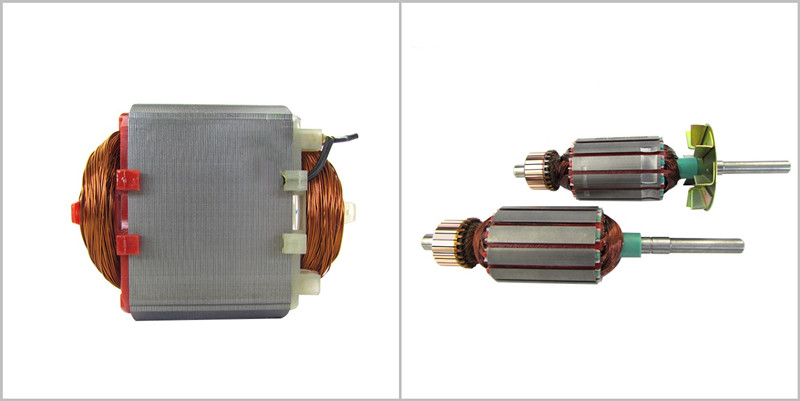
The common interlayer testing machine can set the input pulse voltage value and pulse time. There are four inspection and comparison methods, namely line segment error comparison, area error comparison, corona number and pull conversion order. The first two are the parameter comparison values set by the standard, but the corona number and pull conversion order are easy to be ignored.
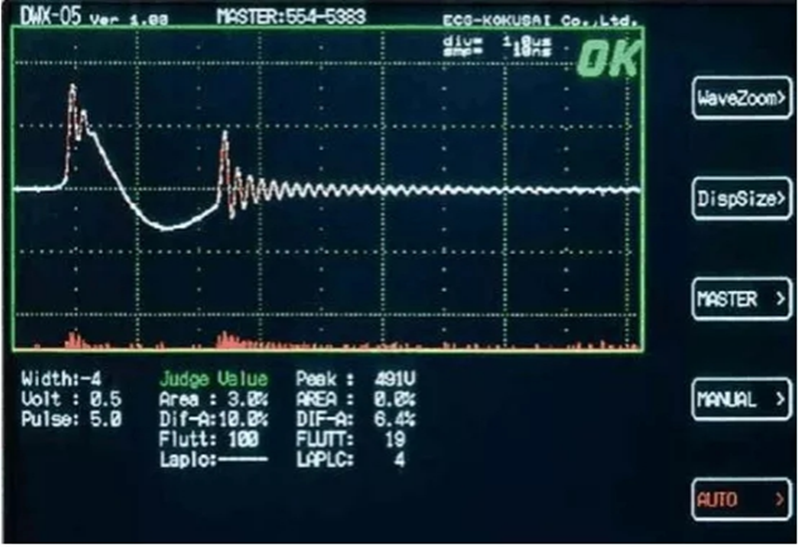
Because the wave pattern of the interlayer test is an oscillating chord wave and decays continuously, the comparison error value of line segments can be measured; Similarly, it is easy to compare the space area surrounded by the line segment, as long as the numerical calculation is done.
Corona number refers to the number of arcs generated by high voltage on the detection coil. These arcs do not directly short-circuit the coil at this stage, but they are regarded as a potential risk factor. It is likely that these arcs will break through the enameled insulation layer and cause damage many years later. The arc effect caused by high voltage or high frequency has become more and more obvious, so the enameled wire manufacturer has started to develop a new product called high frequency enameled wire. Its purpose is to solve the damage caused by these arcs. Therefore, the coil with a large number of corona also represents a higher damage rate in the future. At present, the machine can only detect the number of arcs according to the instrument capacity, which can only be regarded as a probability index. If the detected arc intensity can be set, it can better ensure the safety of enameled coil in the future; There will be no case that the factory inspection is good, but the failure still occurs after installation and operation for a period of time.
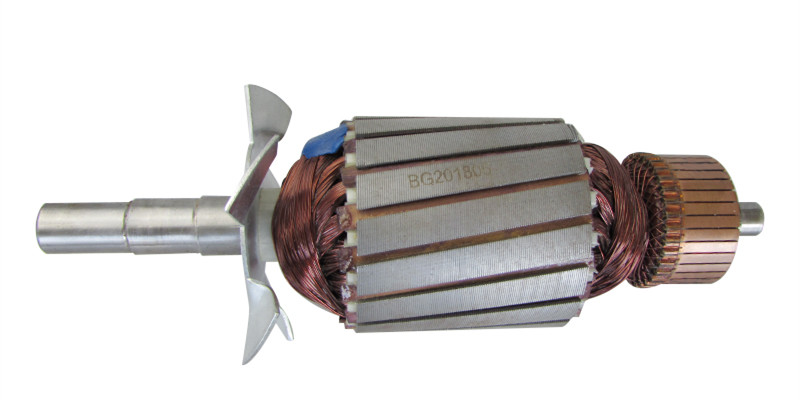
Withstand voltage test
The above two methods are the mainstream coil detection methods at present. The others belong to destructive experiments and are not suitable for detection on the production line. However, in fact, these two tests will also damage the enameled wire. According to the above description, it is known that during the test, high-voltage power should be input for the test, and electric arcs will also be generated, and these electric arcs will gradually damage the enameled layer. Therefore, if the test times are too many or the voltage value is too large, the originally good motor coil may become a defective product, or the possibility of future damage will increase.
 BACK
BACK
Yesterday, the 138th China Import and Export Fair (Canton Fair) was grandly open…
In the golden autumn of October, the fruits are fragrant. On this beautiful mome…
Dear friends, the 138th Canton Fair will be held in Pazhou, Guangzhou on October…
At BG Motor, we firmly believe that the strength of a team can carry dreams furt…
New Breakthrough at Conifer (Silicon Valley Startup)What’s new?Conifer has devel…
The 2025 World Robot Conference (WRC), held in Beijing, brought together top min…